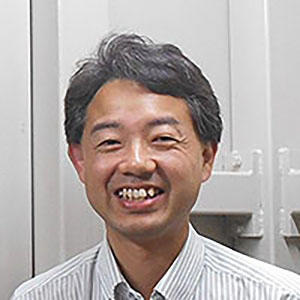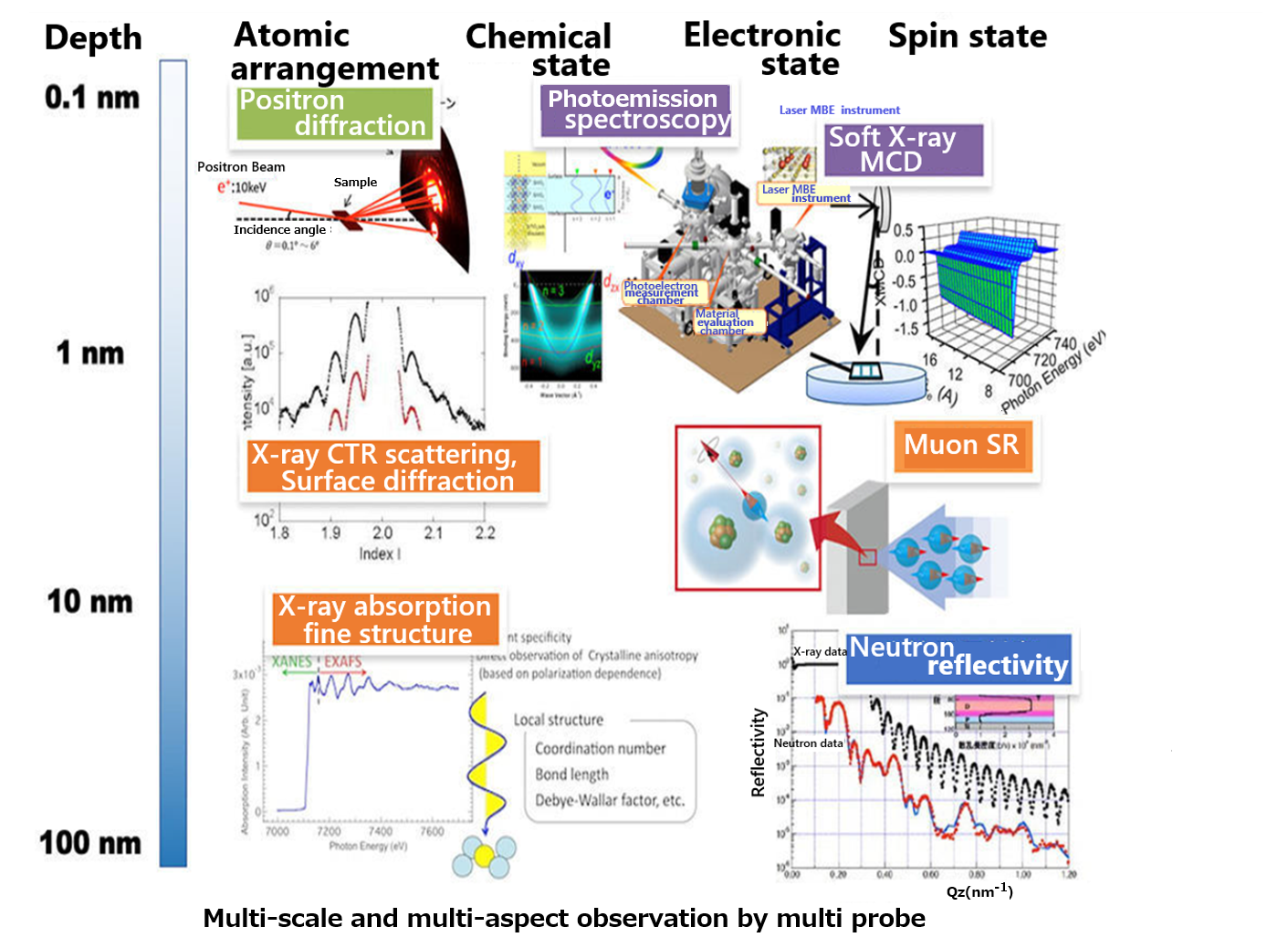
Spintronics materials, which utilize not only the charge but also the spin of electrons, are attracting attention in the development of information communication devices with ultra-high speed and ultra-low power consumption, which are becoming increasingly important in the information-technology society. In this project, we are studying the structure (atomic arrangement) of layered films consisting of very thin magnetic and insulator layers, which are the heart of spintronics materials, by X-ray CTR scattering, surface diffraction, positron diffraction, and EXAFS. We are also investigating the chemical, states by photoemission spectroscopy and soft X-ray XAS, and the spin state by soft X-ray MCD, muon SR, and neutron reflectivity. By using these probes and experimental techniques, we observe various depths ranging from the atomic layer level to several tens of nm, especially focusing on the interface between thin films, and elucidate the mechanism by which spintronics materials exhibit functions such as magnetoresistance effect. This will lead to the development of new materials.
AMEMIYA, Kenta / SAKATA, Kaoriho / WADA, Ken / MOCHIZUKI, Izumi / AHMED, Rezwan
The University of Tokyo, Tohoku University, Gunma University, Waseda University , Osaka University, AIST, NIMS, QST, Tsukuba University
X-ray CTR Scatter, Surface Refraction, Positive Refraction, EXAFS, Photoemission Spectroscopy, Soft X-ray XAS, Soft X-ray MCD, Muon SR, Neutral Reflectivity
